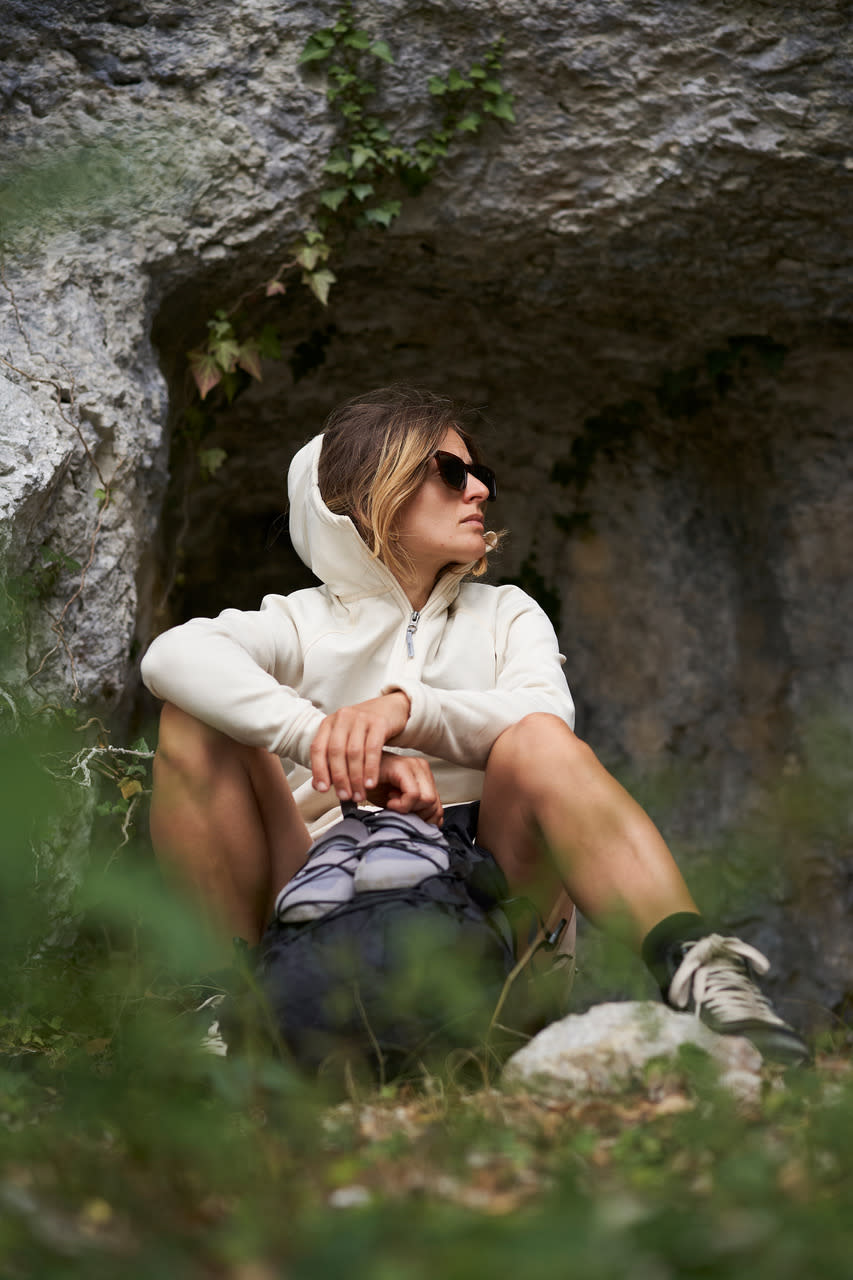Sportswear Brand Houdini Wants Clothes to Be Consumers’ ‘Companions’

Taking a totemic approach to sustainable apparel can reinforce our connection to what was made, and why we purchased a product to begin with. Sportswear brand Houdini embraces this concept by designing sustainably, with the intention that products become “lifelong companions” for consumers.
Sportswear for Houdini materializes as simple and sleek, coupled with decidedly stylish offerings such as its Unisex Puffy Square and Unisex Sleepwalker, both insulation skirts, or its après-ski style Activist base layers, made for the “everyday activist” — those partaking in skiing, hiking and the like.
More from WWD
Houdini’s focus is on the fabric. Eva Karlsson, chief executive officer at Houdini and one of the few female C-suiters leading in the male-dominated global outdoor industry, told WWD that 100 percent of the fabrics used this season are recycled, recyclable, renewable, biodegradable or Bluesign certified. “Every season, Houdini releases a statistics report showing the current status of all their products regarding circularity, fabric and garment origin, use of certain chemicals and environmental labels,” Karlsson said.
“Houdini has had a long-standing relationship with Polartec for a number of years,” Karlsson noted, adding that Polartec’s Power Air Light is made with 73 percent recycled polyester and 27 percent elasterell-polyester — the “key ingredients” in Houdini’s Mono Air Collection.
“The Mono Air Collection is the perfect example of a completely circular style, made from mono materials and engineered to reduce microfiber shedding by 80 percent, meaning a significantly reduced risk of microplastic waste ending up in the ocean. This collection addresses plastic and textile waste on a larger scale and embraces best-in-class outdoor performance and style,” Karlsson explained.
Other natural fibers include merino wool and Tencel Lyocell, two fibers that “have many benefits, both in terms of performance and sustainability,” she said. “As this belief in sustainability is part of Houdini’s DNA, the company is committed to sharing the processes it uses via open sourcing with anyone that is interested. This initiative aligns with their belief that changing the industry must be done through cooperation and sharing.”

Part of how it differentiates in the segment is through its rental, reuse and repair services. “Houdini is reducing the overall environmental impact of over-purchasing habits by providing alternatives to normal consumption,” Karlsson said. As the brand designs products with a smaller impact that last longer, Houdini simultaneously offers programs that align with its mission, such as Rental, renting Houdini products online or in-store; Reuse, top condition Houdini garments for resale through in-store, its web shop or via Instagram, and Repair, by offering free repairs if a garment breaks before the garment itself is worn out.
Adopting the design ethos that Houdini “designs products to become lifelong companions” is as simple as it sounds, Karlsson told WWD. “Houdini is making clothes that should last a lifetime with timeless designs, colors and durability. The end result is less consumption, which in turn means a reduction of raw material extraction and carbon emissions.”
Its design philosophy is loosely led by a thoughtful design checklist: Will it last long enough? Is it versatile enough? Will it age with beauty? Is it easy to repair? Is anything added that isn’t needed? Is it durable enough for its rental program? Is there any end-of-life solution?
Since 2007, the brand has taken back all its own worn-out garments and sends them to the appropriate recycling partners — and Houdini is looking to have its entire ecosystem be circular by 2030. “Eighty percent of Houdini products are circular by design, either made from organic, renewable and compostable/biodegradable organic materials or made from recycled and recyclable synthetics,” Karlsson said.
An average garment is used seven to 10 times in the Western world, with 160 times being the global average, but its Power Houdi, on average, is used at least 1,200 times, according to the brand. “Consumers are starting to demand corporate transparency in terms of product traceability and environmental impact. [There’s] a consumer movement against fast fashion and overconsumption in general, and we see an increase in consumer demand for natural fibers and materials.”
Karlsson also notes that there’s “an explosion” of reuse platforms from brands and retailers. “Our own reuse platform has the biggest relative growth compared to our other categories.”
Houdini’s short-term objective is to move from an 88 percent circular product range to 100 percent circular by 2023, the brand said. “[We want to] continue to share best practices with colleagues to advocate for meaningful change, engage with consumers so they understand the impact they have on the planet when they continue to purchase apparel,” Karlsson told WWD. “Long term, we remain committed to our vision of going beyond zero impact to making a positive impact on the planet and people. Why else stay in business?”
FOR MORE NEWS FROM WWD:
Astronaut Karen Nyberg Launches ‘Earth Views’ Fabric Line
Evrnu Develops Recyclable Material Made Entirely of Textile Waste
Citizens of Humanity, Net-a-porter Partner for Denim Collaboration
Sign up for WWD's Newsletter. For the latest news, follow us on Twitter, Facebook, and Instagram.

 Yahoo Movies
Yahoo Movies 
